Unravelling Roots: The Journey from Maurice Vaughan to Zena Rosengarten
Now with 50% More Gefilte Fish!
When my father died, Mum swapped mourning with microfiche, marching to the National Archives in Kew every weekend. She dragged along my daughter, who, after weeks of sifting through dusty records, declared: “Grandma’s turned into Sherlock Holmes—but with more tissues and less cocaine.” When she begged me to intervene, I couldn’t refuse. After all, if there’s one thing Jews excel at, it’s relentless curiosity (and guilt-tripping the next generation into helping).
The Archives:
Where Drama Meets Dust
The National Archives at Kew became Mum’s second home. Picture this: a Jewish grandmother and a pre-teen, armed with granola bars and existential dread, hunting for clues. My daughter’s breaking point? “They have six shelves on the history of British tea cozies. Six. Grandma thinks our family tree is hiding in one.”
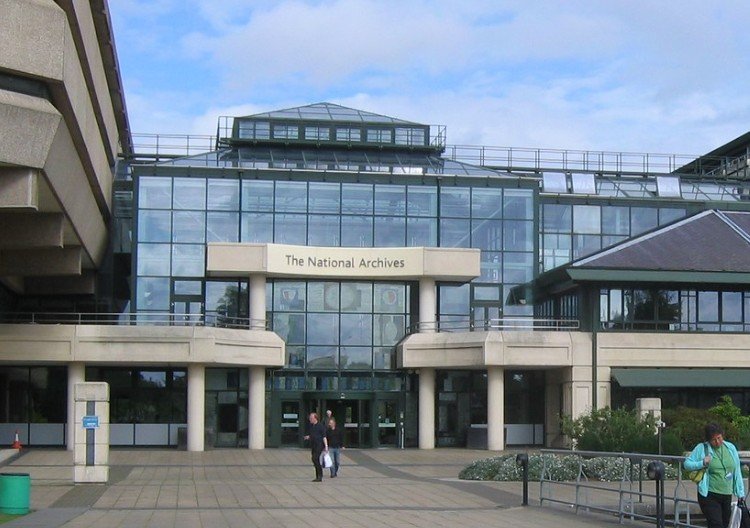
Dad’s story began at Norwood Orphanage, a Jewish institution so old it probably had Moses on the guest list. Founded in 1806, it moved to Norwood in 1861a full nine and a half acres of matzo crumbs and lost socks.
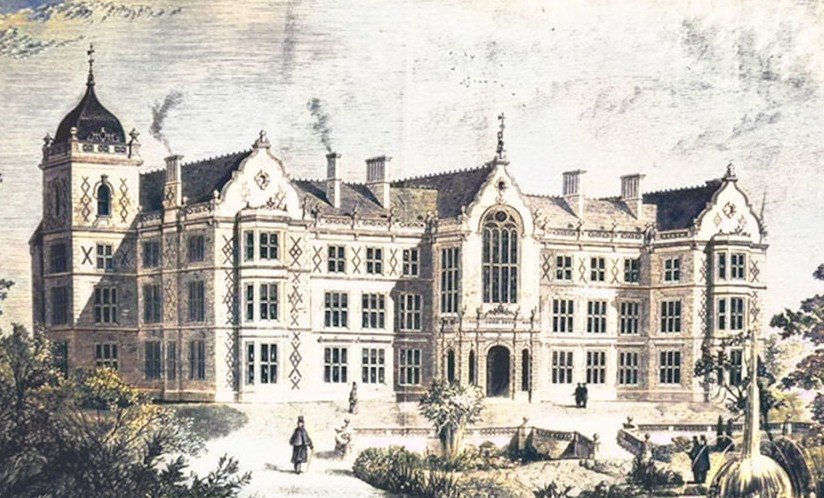
By 1936, they were evacuating kids to make room for refugees. Enter Isaac and Dora Vanovitch, a couple in their 50s who, unable to have children, adopted a baby boy. They named him Monty Vanovitch, which sounds like a character from a Dickens novel if Dickens had written about delis.
Bar Mitzvah Bombshell: Family Drama, Extra Schmear
Monty’s adoption secret lasted until his Bar Mitzvah—the Jewish rite of passage where you’re supposed to become a man, not question your entire existence. During an argument, a cousin hissed, “You’re not even really Jewish! You’re adopted!” Cue the record scratch. Imagine learning your life’s a plot twist during what’s meant to be a party with mediocre hors d’oeuvres. Monty, now a ginger-haired existential crisis, spiralled.
A Life Rebuilt
He later served in Egypt during National Service, eventually settled down, married my mum, and started a family.
My dad was a brilliant storyteller, and I once asked him why he changed his surname from Monty Vanovitch to Maurice Vaughan. He told me that, during his National Service, he worked as a driver in the van pool driving van’s. Every morning, the sergeant would call out, “Vich van, Monty? Vich van?” The nickname stuck, and and after two tears enduring Vich Van Monty! he left the army, and changed his name and Monty Vich Van became Maurice Vaughan.
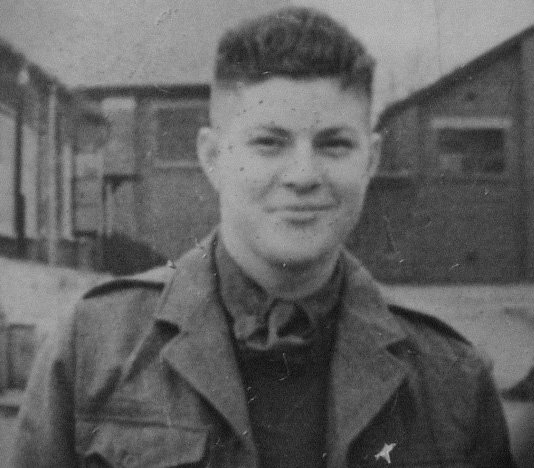
The Adoption Mystery
When my aunt asked about his adoption, he told her that his birth parents had died in a car crash in Germany in 1935. He was then taken in by his grandparents. I traced his adoptive mother Dora’s family and found an uncle who remembered Isaac and Dora bringing Monty home from the orphanage. He was certain that they were not blood relatives Isaac and Dora couldn’t have children, so this baby was a blessing in their lives.
As I began uncovering more details, my mother took me aside and said, “There’s something I need to tell you. You already know your father was adopted, but what you don’t know is that, throughout his life, he tried to trace his biological family.”
The Adoption Files: A Lesson in Jewish Nosiness
As an adoptee, he had a social worker assigned to him and made regular visits to try and learn more about his birth mother. On one of these visits, the social worker briefly left the room and instructed my parents not to look at the file. of course, the moment they were alone, they peeked inside (because telling Jews not to look is like daring them to eat just one rugelach) quickly scribbled down three pieces of information on a scrap of paper that he carried in his wallet until he died, Mum handed me the scrap of paper posthumously, frayed from decades in Dad’s wallet. “Handle with care,” she said. “It’s older than the last slice of challah in your freezer.” Thr three pieces of information where 34 Prebend Street, Rita Rose and one other piece of information (read on)
The Search: Blitz, Bureaucracy, and Bubbe’s Ghost
Prebend Street was rubble thanks to the Blitz. Undeterred, we Googled like our WiFi depended on it. Islington Council’s archives? Silent. “Typical,” Mum muttered. “They reply slower than a teenager asked to call their bubbe.”
Then plot twist! We already had his adopted birth certificate with his adoptive parents and his shiny new name but we worked out the only male baby born in London on my dads birthday was to a Christopher Rose we applies and the birth certificate revealed his real name: Johnny Christopher Rose, born to Zena Rose.
A Breakthrough in the Archives
We revisited my father’s adopted birth certificate and discovered that he had spent two years in the orphanage before his adoption.
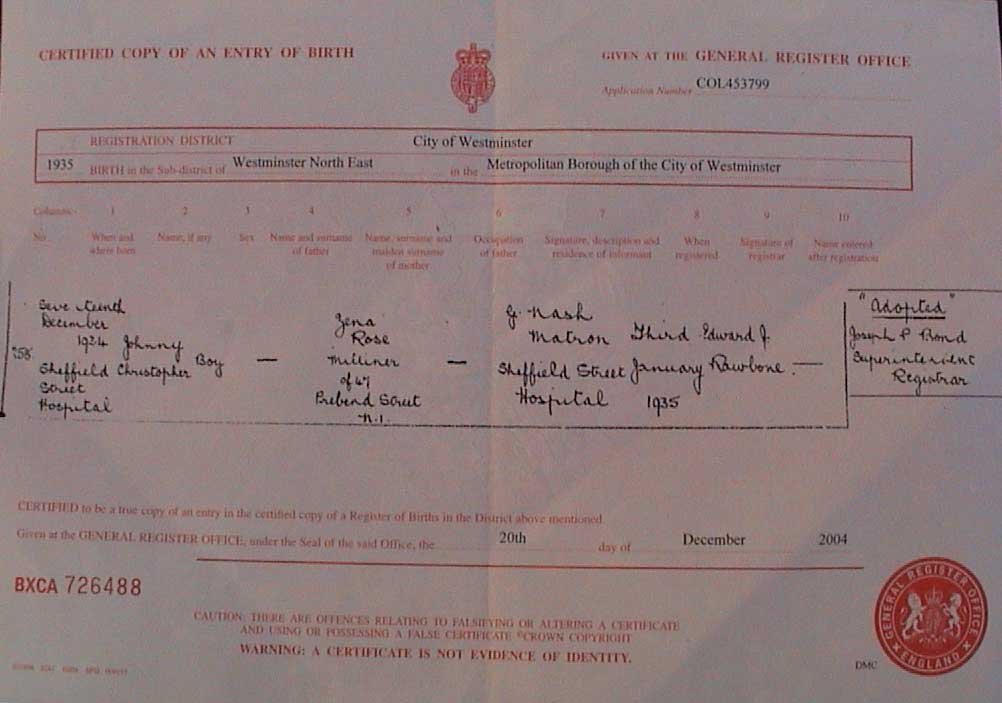
Our persistence paid off. We found that only one male birth had been recorded in London on Maurice’s exact birthdate: Johnny Christopher Rose, born to Zena Rose.
The long-awaited birth certificate confirmed the Prebend Street address and listed Zena as his mother. It was a pivotal moment that finally tied Maurice’s origins to a real person. Six months later, Islington Council finally wrote back, “Thanks for the speed,” I replied. “Next time, send a carrier pigeon. It’s faster. their reply confirmed Samuel and Leah Rose lived there but moved by 1937, leaving us wondering how were they connected to Zena where they her parents?
Piecing Together the Past Maurice Vaughan born Johnny Christopher Rose entered the world under mysterious circumstances. Adopted in 1936 through Norwood, a historic Jewish children’s charity, he was renamed Monty Vanovitch and raised by Isaac and Dora. For decades, his true lineage remained a mystery especially after his passing, when we assumed the trail had gone cold.
But fate, persistence, and a single scrap of paper would change everything.
The Forum Post: Steve Milne, Mensch of the Century
Desperate, I posted on a genealogy forum: “Seeking Zena Rose. Will trade kugel recipe for intel.” Within hours, researcher Steve Milne replied: “Zena Rose = Zena Rosengarten. Your dad had a half-brother, Ralf, l’chaim!”
Turns out, “Rose” was shorthand for Rosengarten. Within hours, researcher Steve Milne responded: Zena Rose appeared in his family tree as Zena Rosengarten, residing at 47 Prebend Street with her parents and siblings.
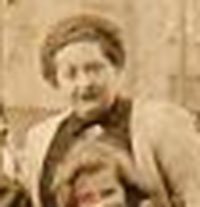
This revelation bridged decades of silence, tying Maurice’s adoption to the Rosengarten lineage. The discovery also hinted at a poignant truth: Maurice’s birth name, Johnny Christopher Rose, had been reshaped by adoption, yet his roots endured in the Rosengarten story.
According to his family tree, Steve pointed to Samuel Rose and Leah Rose (nee Berman) as her parents he told me that my dad (who had spent his life as an only child had a half-brother Ralf Rose and that the family name Rose was shortened from Rosengarten
So we now started researching Rosengarten, Rose, and Berman
Lingering Mysteries & The Road Ahead
While the connection to Zena Rosengarten marks a milestone, gaps remain. Was Zena’s relocation tied to hardship, societal pressures, or the looming shadow of war? How did Samuel and Leah Rose fit into this puzzle? And what became of Zena after 1937? The family’s quest continues, and after 40 years the family tree has grown and to prove our findings we have used DNA testing and newfound relatives to grow the family tree.
Current Stats (Because Jews Love Numbers):
1248 Individuals:
459 Family Groups:
Earliest Birth: 1830
Most Recent Birth: 2025
and 291 Unique family names
A
ABELSON, ABRAHAMS, ABRAMOWITZ, AGETSTEIN, ANGEL, ANISH, APLEY, ARKIN, ARONSON, ASH, ASHOUR, ASSELL, ATWOOD, AXELROD
B
BADERMAN, BAKER, BALLARD, BAND, BARBER, BARBIERI, BARCHAN, BASKIN, BASNER, BAXENDALE, BEACH, BENNETT, BENOWITZ, BERGMAN, BERKMAN, BERLIN, BERMAN, BIDNEY, BISGAJER, BLOOM, BLOW, BRAZIL, BREWER, BRITCHSKY, BROWN, BUCHDAHL, BUCHMAN, BURGETT, BURNS, BURNETTS
C
CAPLAN, CARLSON, CHANDLER, CHASE, CHEREN, COHEN, COLEMAN, COLLINS, COOPMAN, COSTA, COWAN, CYWA
D
DAHAN, DALE, DANNENBERG, DARE, DAVIS, DELLA PERGOLA, DESMOND, DOBIN, DUBIN
E
ECCLESHARE, EICHENGRUEN, ESHMADE, ESTRIN, EVENTHAL, EZRA
F
FALCONER, FARMER, FEINGOLD, FEIST, FIELDING, FINESILVER, FIORENTINI, FISH, FISHER, FIVAS, FLIOR, FLEISHMAN, FLEISHMANN, FRIEDMAN, FUTRANSKY
G
GAMLIEL, GARDRE, GARDER, GARBER, GARWOOD, GELKOFF, GINSBURG, GLASS, GODFREY, GOLDER, GOLDBERG, GOLDFARB, GOLDSTEIN, GOODMAN, GOTTESMAN, GRADUS, GREEN, GREENWALD, GRESSER, GRIVER, GROSSBERG, GROTH, GRUMBAR, GWIAZDA
H
HAGAN, HARRINGTON, HARRIS, HARTOG, HARVEY, HAWSE, HERSH, HETTY, HILDRETH, HIRSCH, HIRSCHFIELD, HOLTZMAN
I
ISAACS, ISENBERG
J
JOHNSON, JONAS, JOSEPH, JUDD
K
KAFEMAN, KATZ, KAYE, KHEDOURI, KLEINMANN, KRAUSS, KRITZER, KROVITZ, KUHN, KUNIYOSHI, KURILOFF
L
LACHER, LAGAZIO, LAKE, LANG, LANGSNER, LENNARD, LEHRER, LEIBOWITZ, LEIGH, LEVAN, LEVINE, LEVY, LIGHTMAN, LIPMAN, LOECHER, LOOMAN, LOUGHNANE, LOWE
M
MALNICK, MANNING, MARADEEN, MARKHAM, MARSH, MARTELL, MEISLER, MEYERS, MIHATOV, MILNE, MILLER, MILLMAN, MIRLING, MOLINEUX, MORRIS, MOSS, MUTTON, MYEROFF, MYERSON
N
NAIDORF, NEEDLEMAN, NERDEN, NESBITT, NEWHOFF, NEWKOFSKY
O
ODEN, OGEN, ORDER
P
PADDOCK, PANNICK, PATAKI, PASSARELLA, PELTZER, PERLMUTTER, PESKIN, PRONT, PRSYSUCHER
Q
QUINN
R
RABINOWITZ, RACITI, RAVIELE, REDLAND, REILLY, REISMAN, ROSEN, ROSENBERG, ROSENGARTEN, ROSE, ROTEN, RYBACK
S
SAKOLOVE, SALAMAN, SALTZMAN, SAXE, SAUNDERS, SCHLAGER, SCHNEIDER, SCHNEIDERMAN, SCHOOLING, SCHWARTZ, SCHWECHHEIM, SEEDBURGH, SEIGEL, SELLER, SELWN, SHACKMAN, SHAPIRO, SHELLY, SHER, SHERMAN, SHINDLER, SHORE, SHORN, SHRIEBMAN, SHULMAN, SIEBER, SIEGER, SILBER, SILVER, SILVERSTONE, SIMONS, SIMS, SINGER, SIDELL, SKROME, SLOWMAN, SMITH, SNADER, SOKOLOVE, SOLOMON, SPEIRS, SPIRO, STADLER, STANTON, STARR, STEIN, STEINHART, STILTZ, STOLL, STOLTZMAN, STRAUSS, STREICHER, SUHADOLINK, SULLIVAN, SWARTTZ, SWERLING
T
TAYLOR, TEACHER, TELLER, TEMPLE, TERBAN, THOMAS, TINN, TORRES
V
VALERO, VANOVITCH, VAUGHAN, VISHNIAVSKY
W
WALLACE, WALLER, WANIEWICZ, WARD, WARMFASH, WASERMAN, WIJERATNA, WILEY, WILLNER, WOLFSON, WOLKOVITCH, WOODWARD, WRIGHT
Z
ZEIDER, ZINMAN, ZOLER
Epilogue: Why This All Matters
Dad’s story isn’t just genealogy—it’s Jewish genealogy, where every discovery comes with a side of cholent and a pinch of irony. From orphanages to army vans, Blitz bombs to forum posts, it’s a tale of resilience, humour, and the unshakable belief that someone out there owes you a Passover invitation.
So if you’re a Rosengarten, Rose, Berman, or Vanovitch or just know a good knish recipe reach out. We’ll save you a seat at the table. Just don’t touch the good china.
🔎 The search continues… preferably before the next Yom Kippur.
